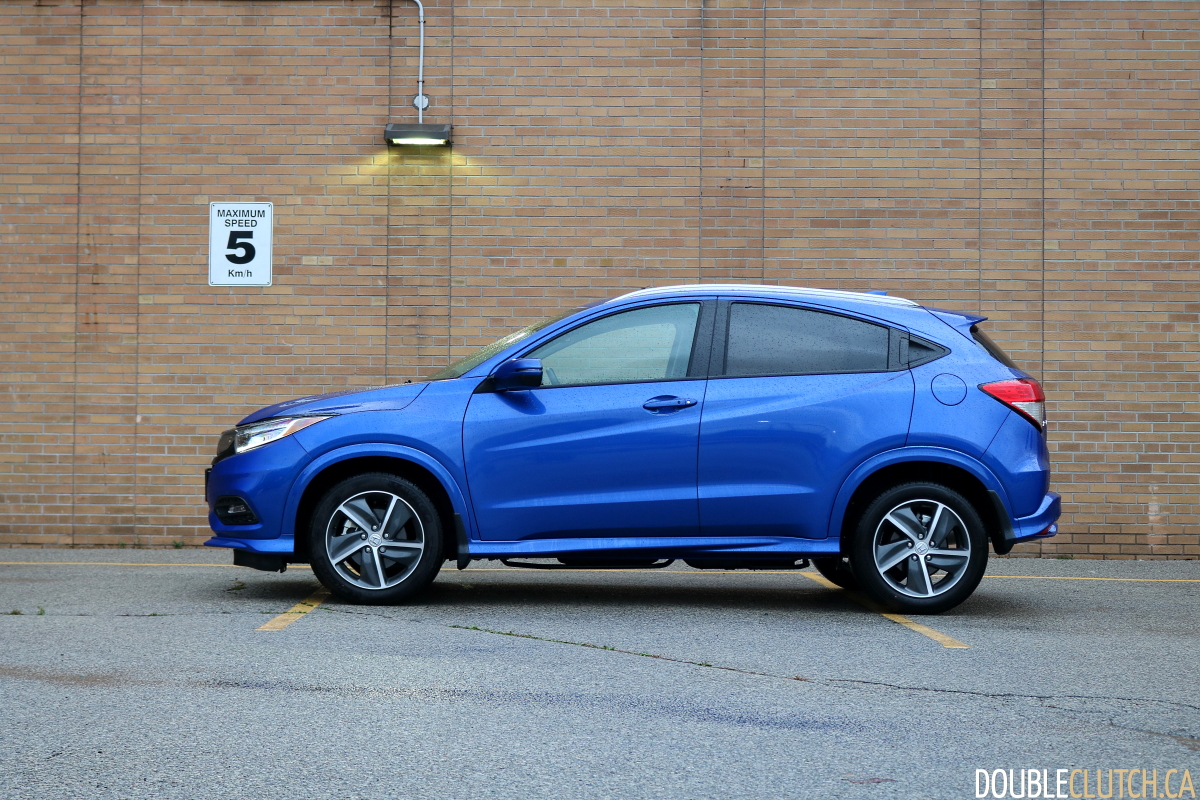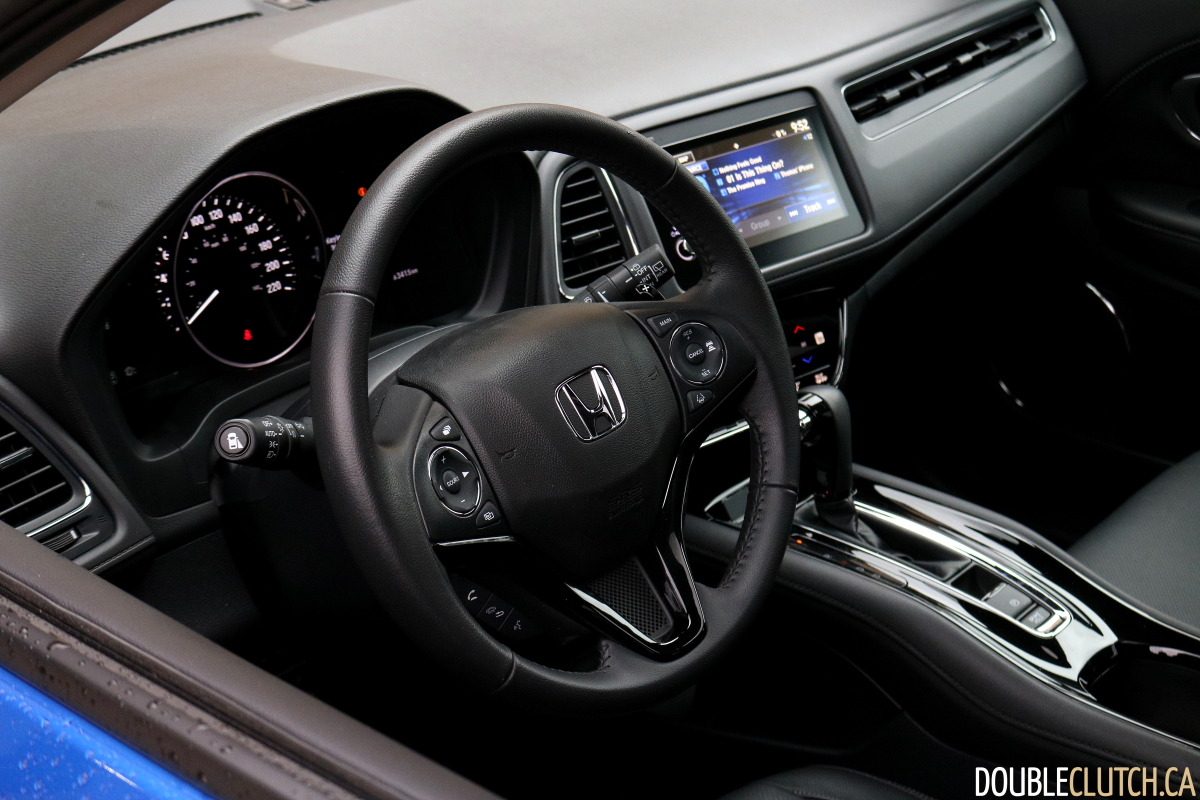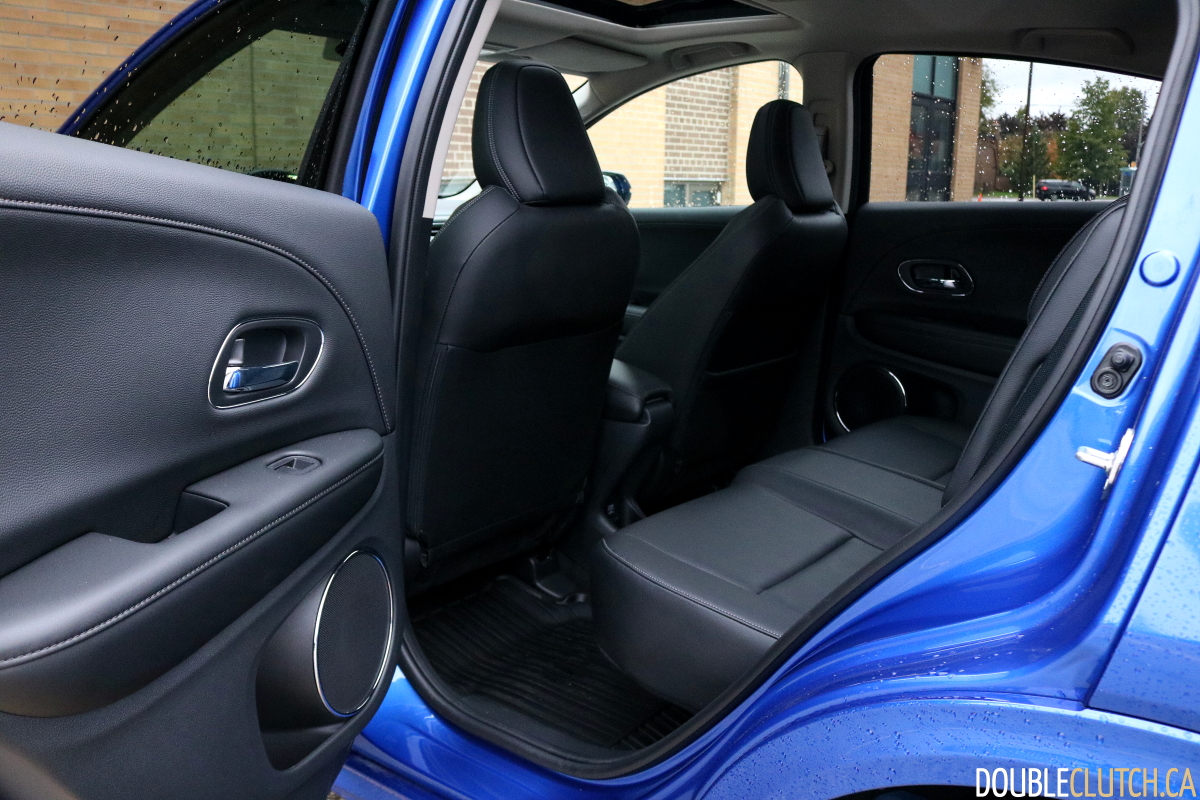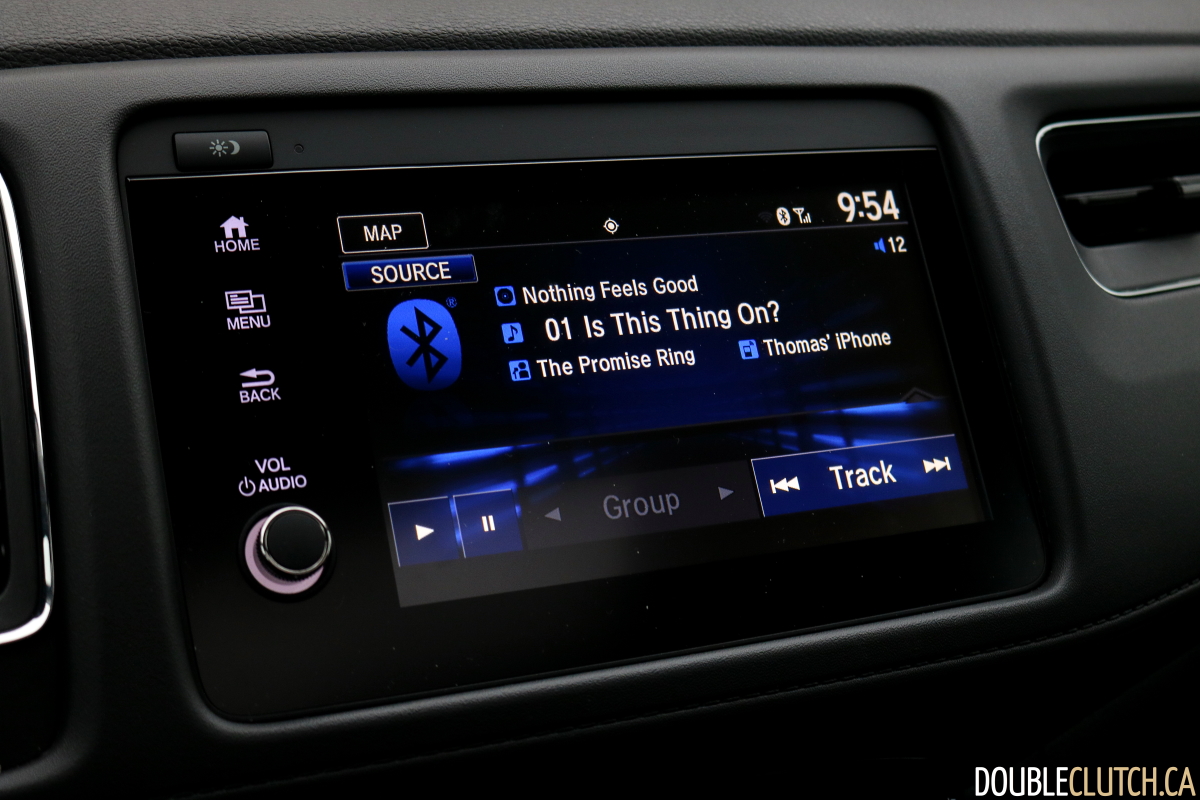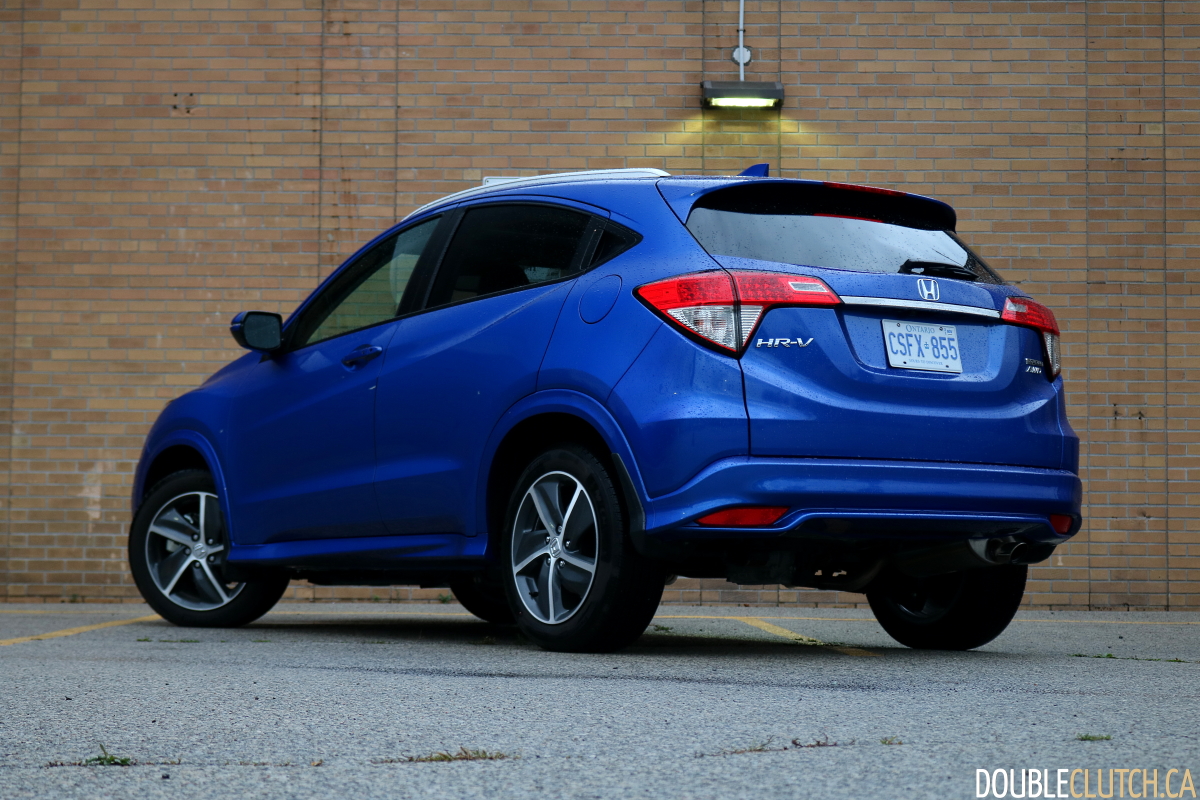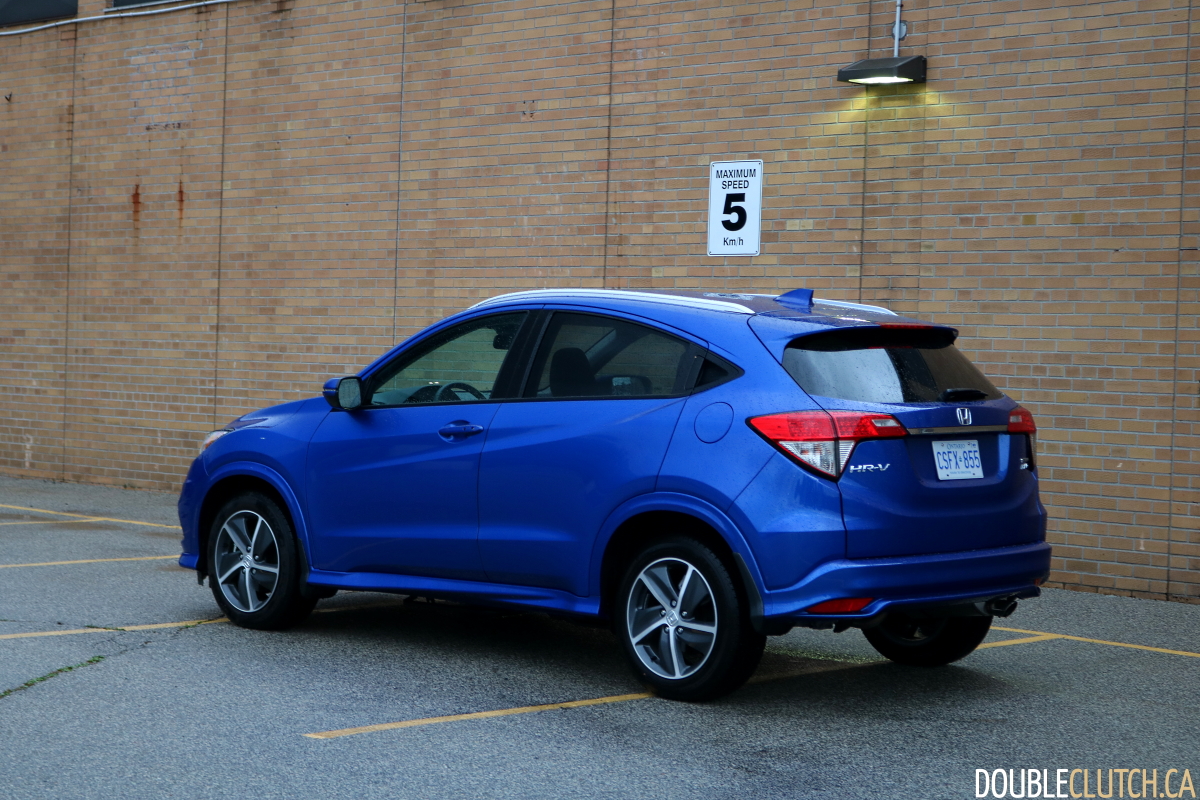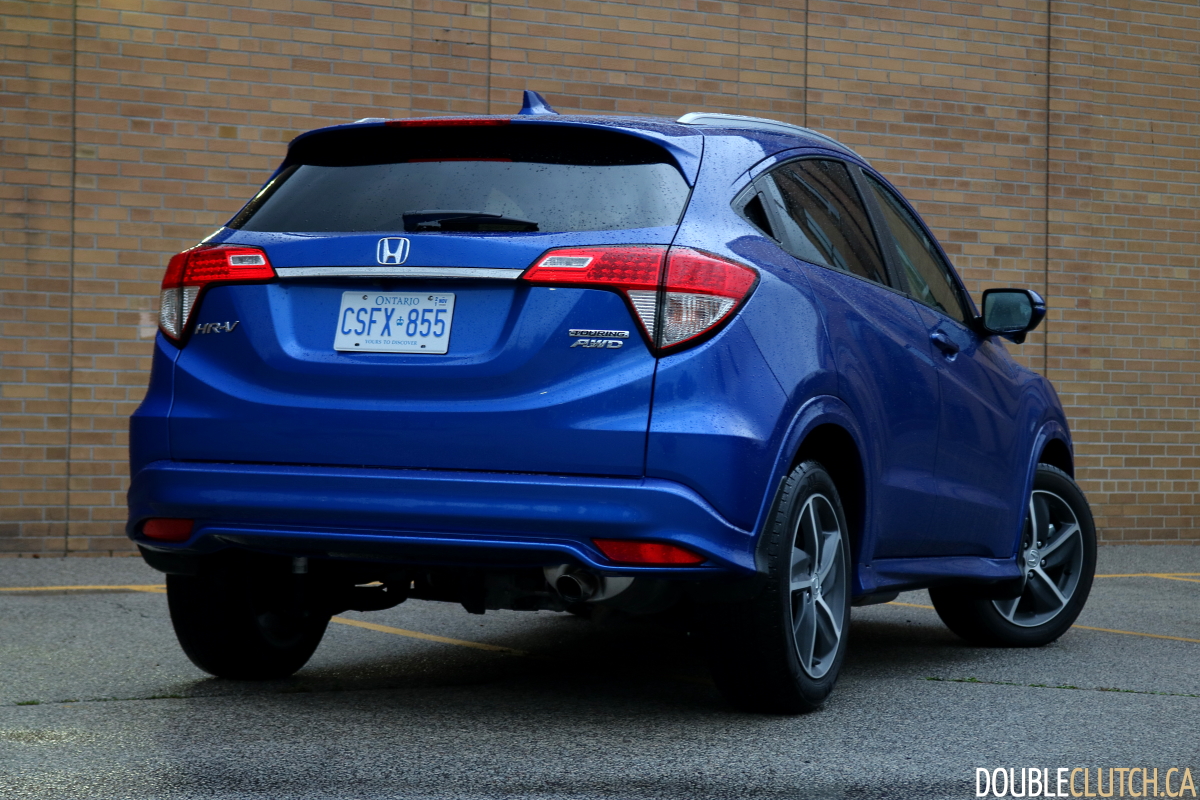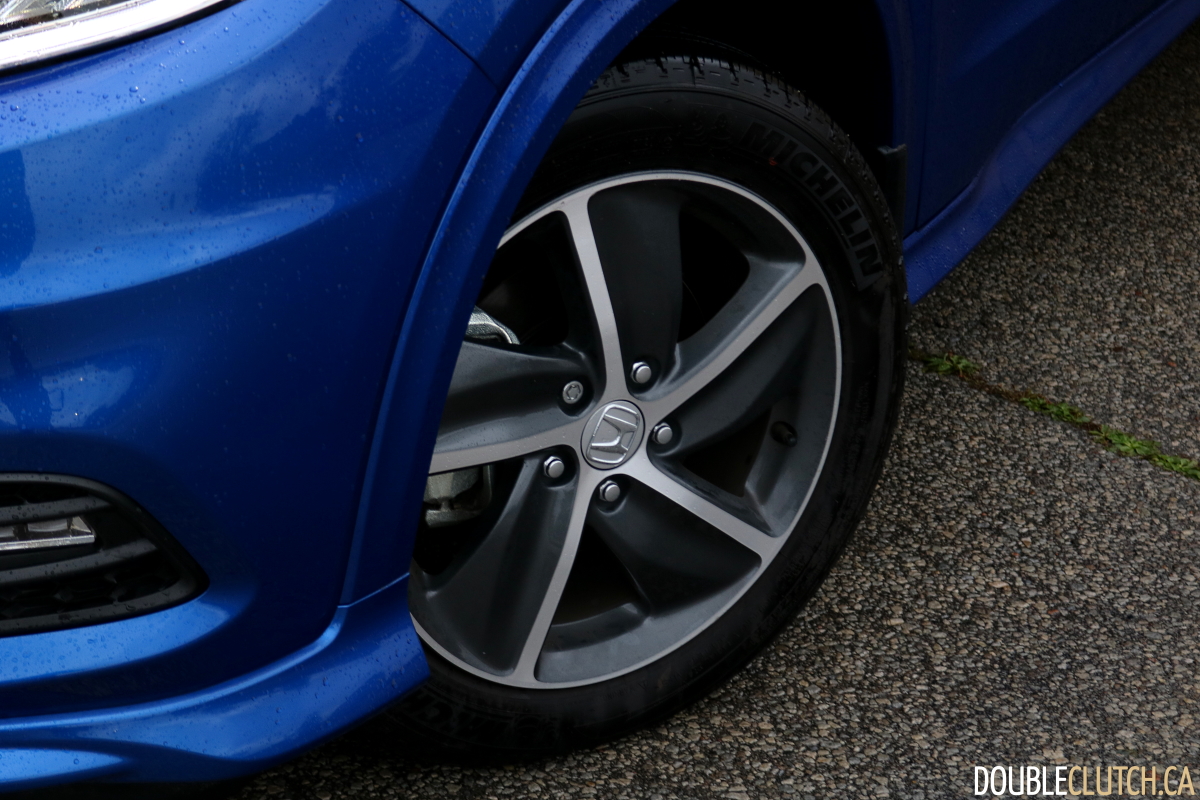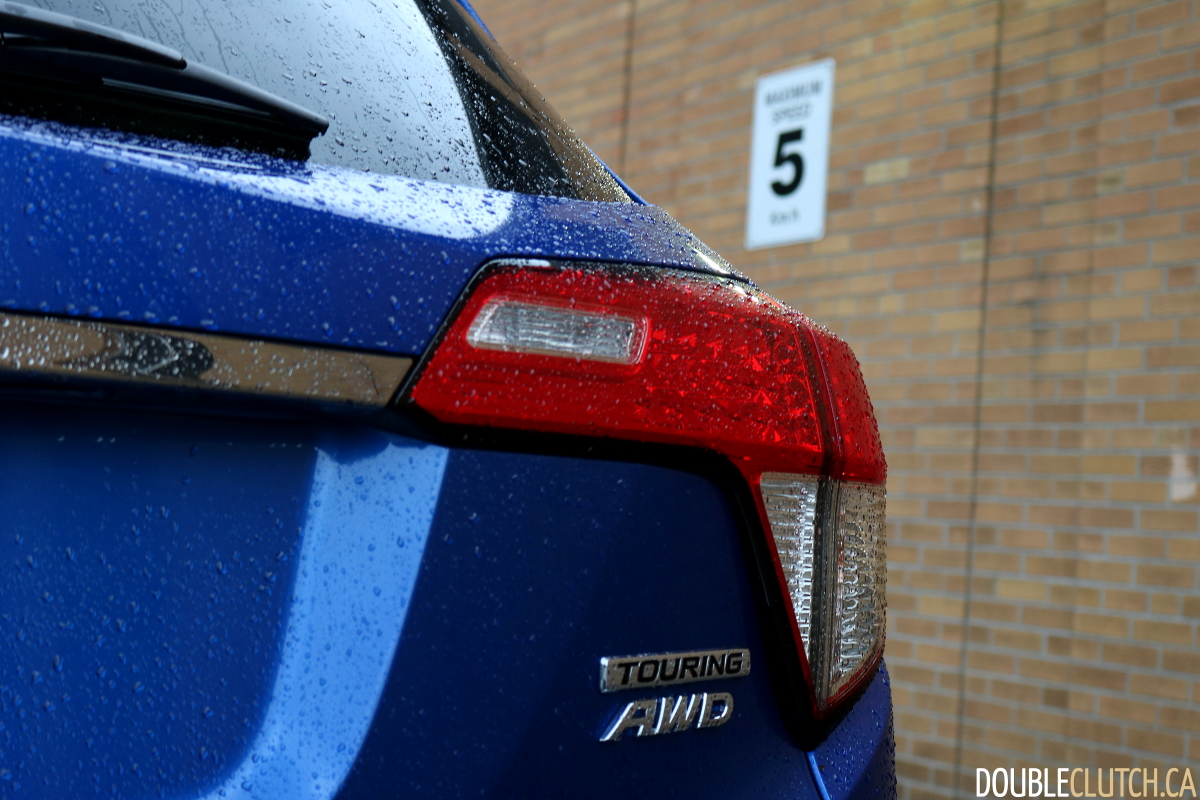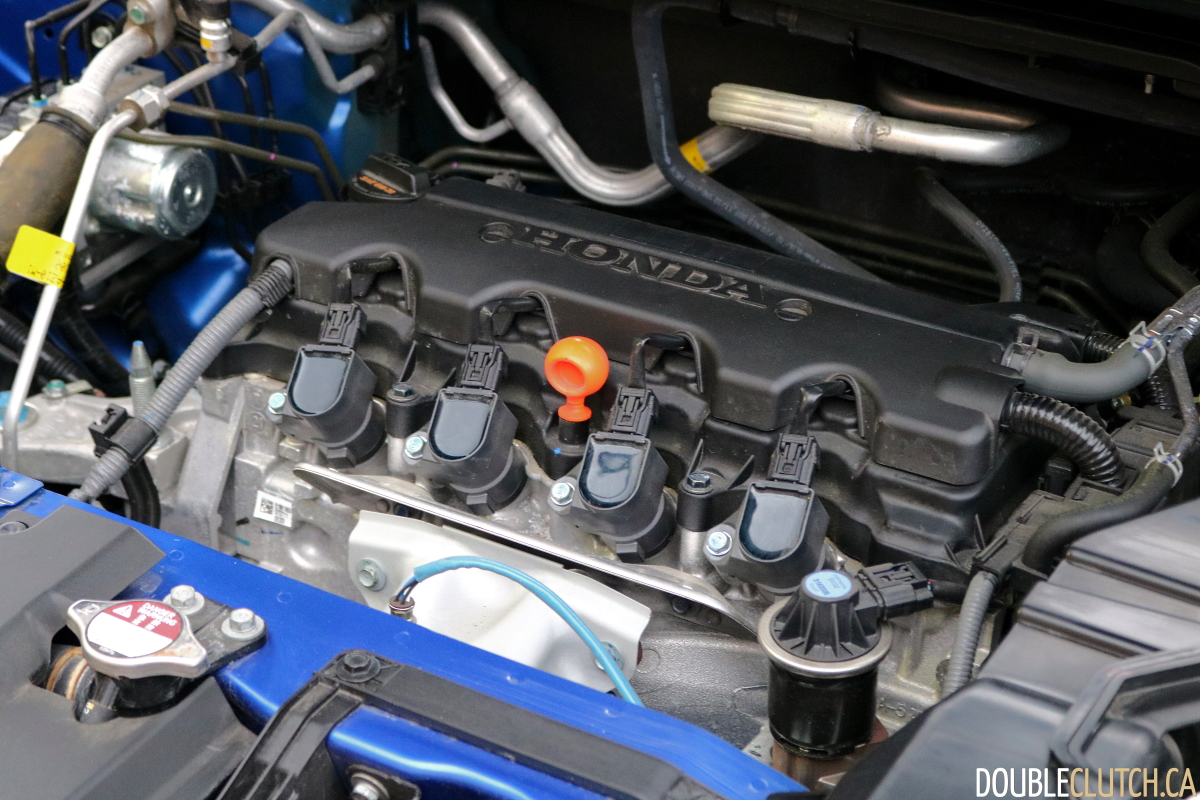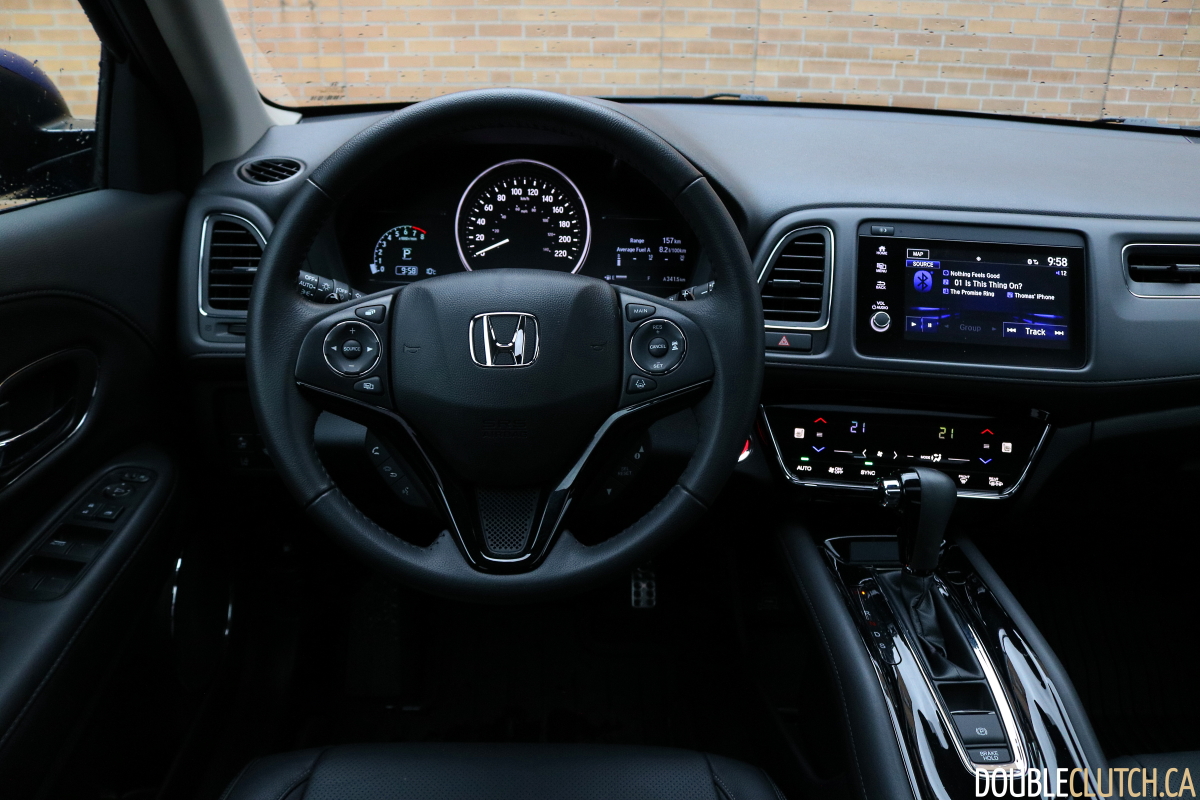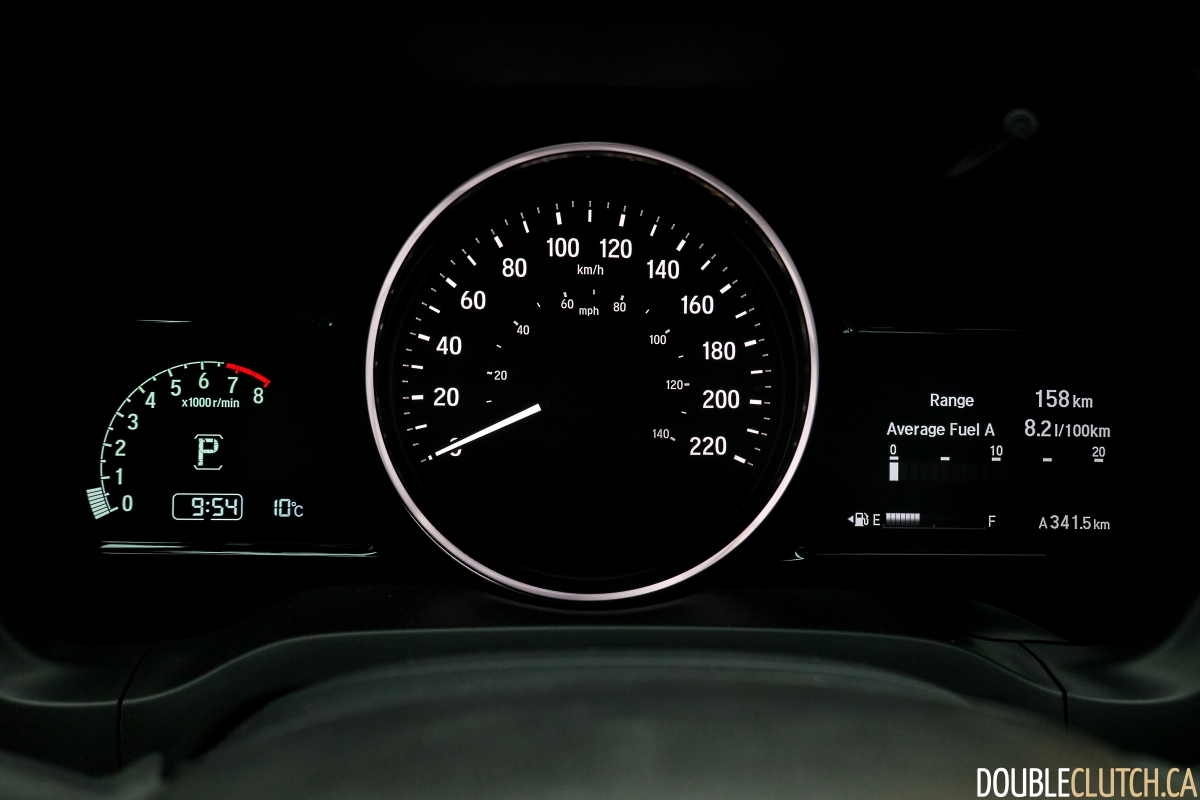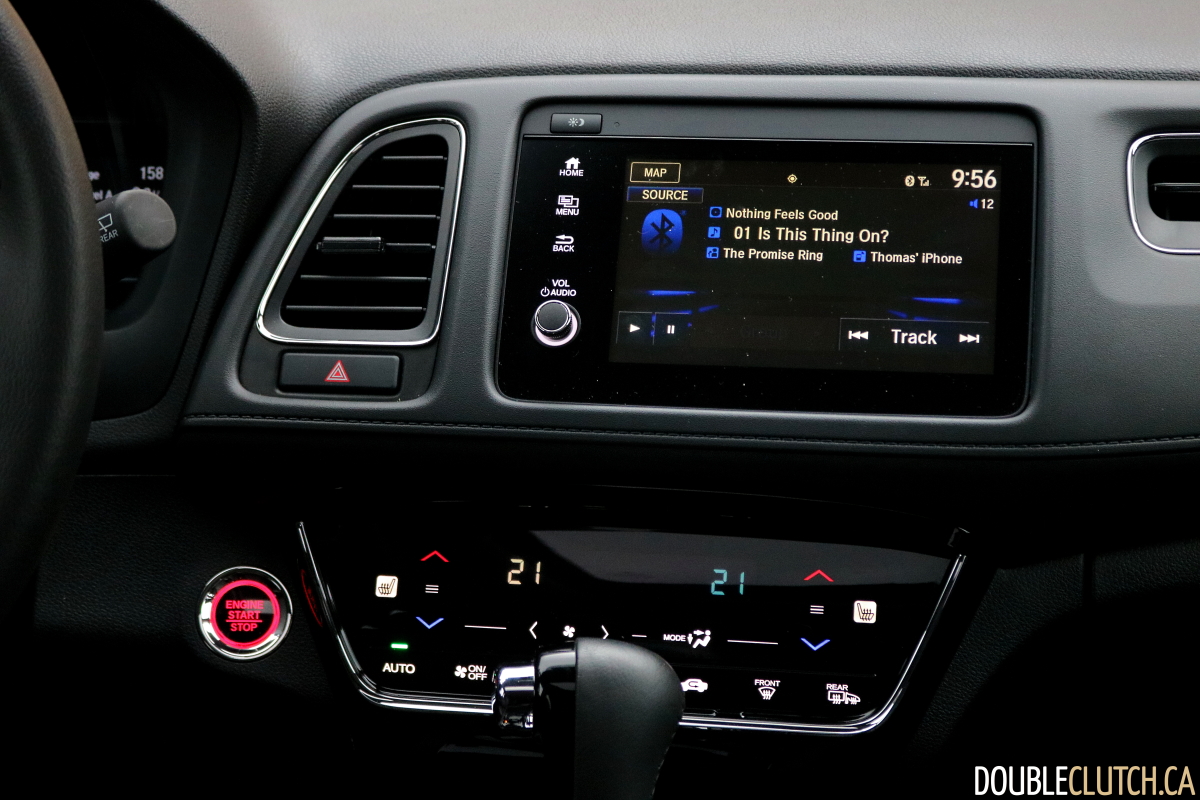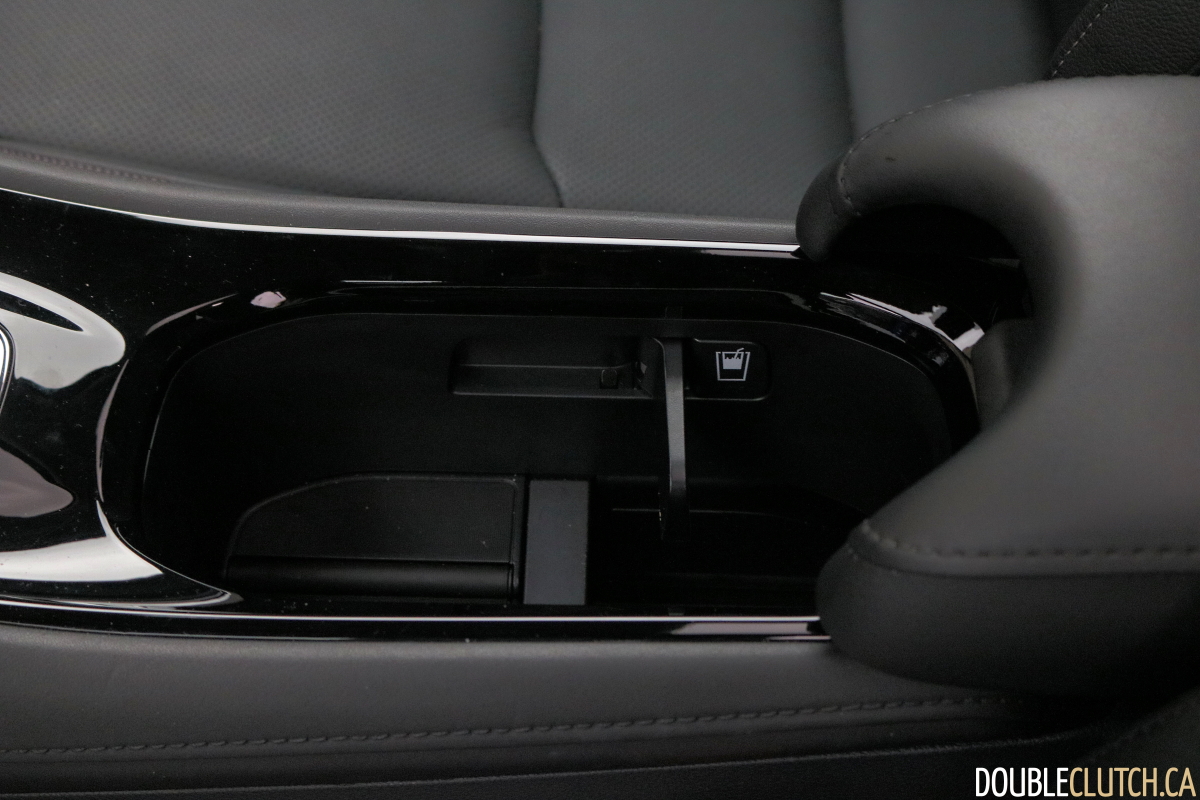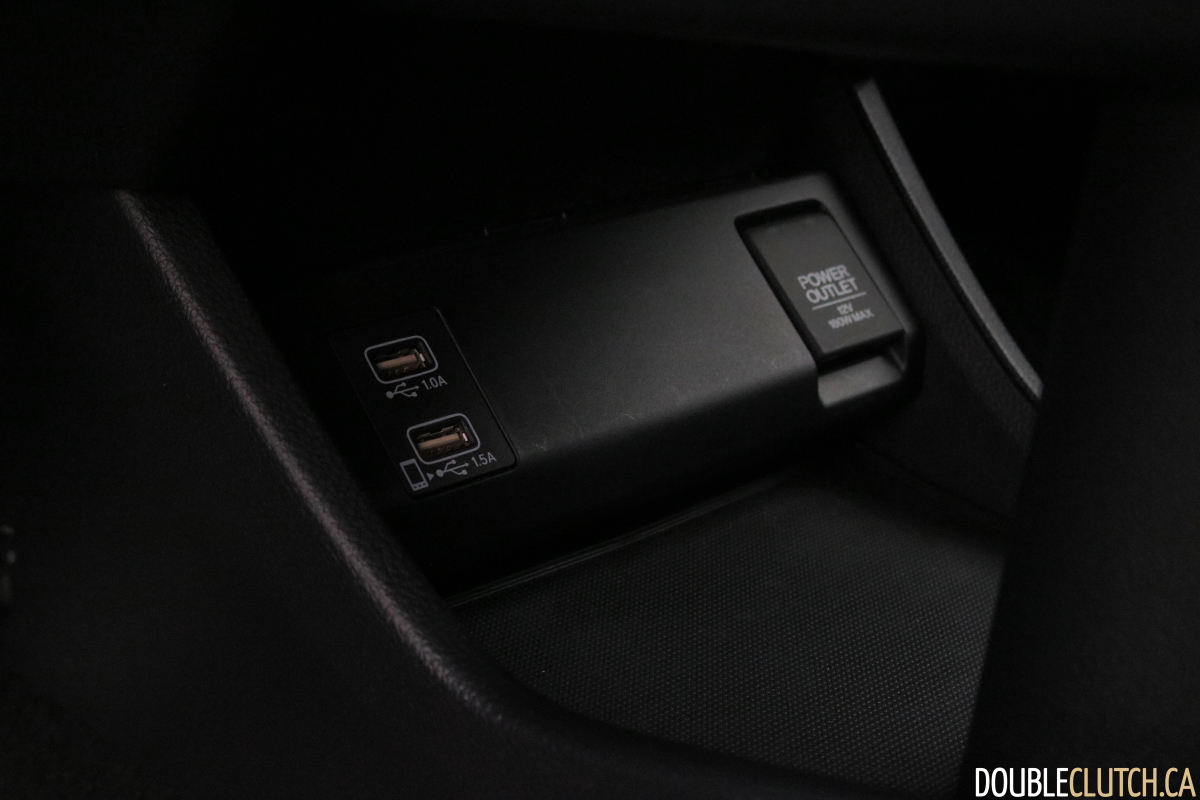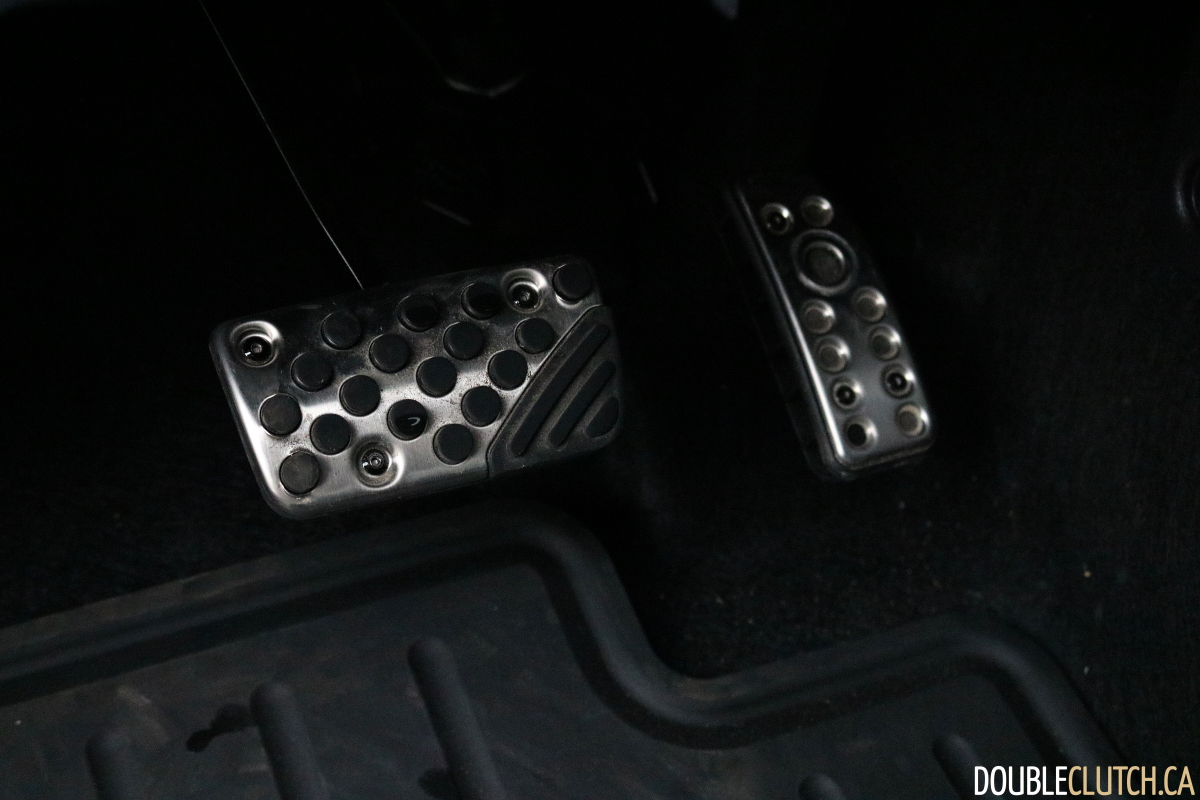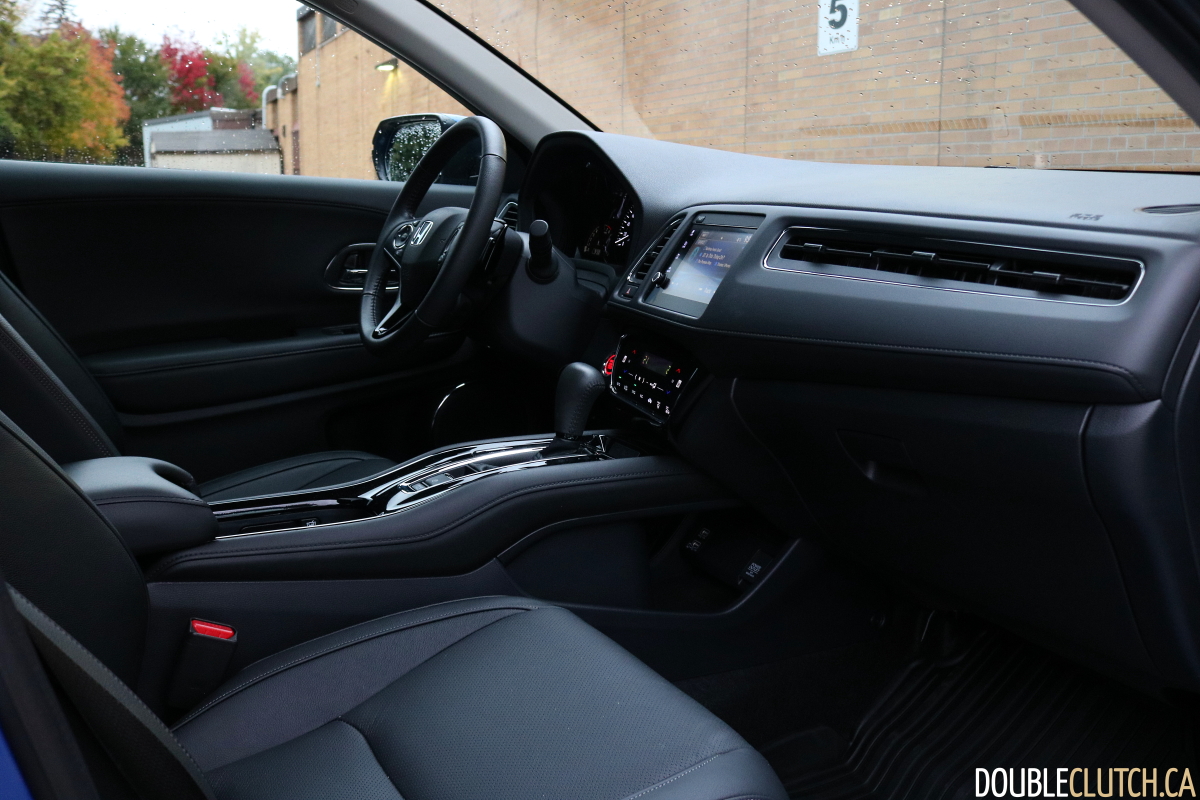Nearly every mainstream manufacturer now has one and some even have two in their lineup. While Honda wasn’t the first to market with a subcompact crossover, their entry into the field has enjoyed a certain amount of success over the past five years. To see if it still holds its own against newer competition, I grabbed the keys to a 2021 Honda HR-V Touring AWD.
On the outside, the HR-V eschews macho posturing for a more ovoid silhouette. A sloping hood and a smiling main grille give it a friendly face while hack-and-slash Chris Bangle-inspired character lines keep up with the fashion trends of today’s hottest shoes. A large hatch that goes deep into the bumper aids cargo loading while sleek LED lamps on my Touring-trim test model pair function with form.
Perhaps the quirkiest element of the HR-V’s exterior is the location of the rear door handles. They’re way up in the window frames which looks awesome but renders them inaccessible to children, a notable design flaw for such a practical vehicle.
Step inside the HR-V and you’ll realize that it, too, is an exercise in interesting ideas. The bezel around the speedometer is both illuminated and translucent almost like an iMac G3. The centre console is multi-tiered with a sliding armrest and features spring-loaded trap doors in the cupholders for taller drinks or more storage space. Instead of two traditional air vents on the passenger side of the dashboard, Honda have installed this massive horizontal bank of three vents that looks remarkably avant-garde.
And that’s all before we get to the rear seats. See, the HR-V is based on the Honda Fit and adopts the same Magic Seats as Honda’s dearly-departed subcompact hatchback. Because the fuel tank is actually under the passenger seat, the rear seats can fold way down into the floor for more overall cargo space or have the lower squabs flipped up to carry tall things. It’s pragmatic design that pays dividends in space and functionality, something that would make the engineering sensibilities of Soichiro Honda proud.
On the flipside, some of the interior appointments aren’t especially nice. For instance, the big bank of air vents on the passenger side of the dashboard looks fantastic until you realize the trim around them is made of recycled yoga mats. The unadorned vinyl on the upper door cards would be nice if it weren’t as greasy as a fast food combo meal and the bulk of interior surfaces consist of cheap, hard plastics. While a lack of widespread soft-touch surfaces isn’t unexpected for an entry-level product, some razzle-dazzle of stitched textile or coloured trim would be welcome, especially as competitors have embraced such touches with open arms.
When it comes to technology, the HR-V never fails to disappoint. For instance, the entire climate control panel is touch-sensitive without haptic feedback. While it mostly works fine due to the set-it-and-forget-it nature of automatic climate control, some of its functions are quite irksome to operate. When you heap yourself down in the driver’s seat on a brisk autumnal morning wearing gloves as thick as Scottish fog, touch-sensitive heated seat controls just don’t work.
It’s the same story with the infotainment, a laggy, buggy low-res ode to Great Recession-era tech. Blank pages are abundant, submenu navigation is convoluted, screen quality in on-par with a Nokia from 2011 and the general UX would be an embarrassment on a $50 touchscreen head unit from AliExpress, nevermind an OEM infotainment system.
Powering the HR-V is Honda’s R18Z9 1.8-litre single overhead cam (yes, seriously) four-cylinder engine. While it does have i-VTEC, the cam switchover reduces valve lift at low RPM and low load, enhancing fuel economy rather than power. As a result, the HR-V only makes 141 horsepower and 127 lb.-ft. of torque. This wouldn’t be a problem if it weighed very little but this top-spec all-wheel-drive weighs almost 200 kilograms more than a loaded Nissan Kicks. Garnish this cocktail of sloth with a CVT and the powertrain will replicate the tortured, laborious screams of an office worker being forced back into their cubicle under even moderate acceleration.
Highway speeds happen eventually but without any enthusiasm or passion. This could be forgiven if the result was genuine efficiency but over a week of mostly highway driving, I averaged 8.2 L/100km. That’s in line with the government’s combined estimate, considerably worse than a Nissan Kicks and not much better than the more powerful, more refined Mazda CX-30. What’s more, aggressive CVT tuning has the HR-V jumping off the line like an unruly Shih Tzu at the dinner table, requiring a deft right foot to execute smooth low-speed acceleration.
The display of noise, vibration and harshness continues in steady-state cruising. While the relative lack of insulation leading to a noisy cabin is expected for an older entry-level design, there are a few unexpected sources of annoyance. For instance, my fully-loaded test car came with a sunroof and on a reasonably warm autumn week, a sunroof is a nice thing to use. Unfortunately, it was more irritating than pleasurable due to a shrill wind whistle present in both the open and vented positions. What’s more, the rear suspension feels noticeably overdamped, making the whole vehicle ride like a pogo stick at higher speeds.
Normally, tuning decisions like this are a band-aid fix for greater payload capacity or reduced corner-entry understeer but the HR-V isn’t substantially more capable than its competitors, nor does it want to rotate on corner entry. Even with two king-sized fistfuls of weight transfer, the HR-V just wants to plough like an agriculture major. It’s unfortunate considering the steering is well-weighted, quick and accurate in keeping with Honda tradition.
Granted, all of the HR-V’s shortcomings could be forgiven if it were cheap, but it simply isn’t. It starts at $25,705, $507 more than a fully-loaded Nissan Kicks. Load it up with leather seats and all-wheel-drive like my test car and the sticker price will clock in at $34,205. That’s a lot of money for a subcompact crossover with no heated steering wheel.
If your only requirement is class-leading practicality, the 2021 Honda HR-V Touring AWD is the car for you. However, if you crave more than that, I urge you to look at the competition. The Nissan Kicks is considerably less expensive, the Mazda CX-30 is considerably nicer and the Kia Niro Hybrid is considerably more efficient. If you need to have a Honda though, I urge you to wait. A new HR-V should be just around the corner and judging by it’s Japanese-market counterpart, it should be a massive step up from the current model.

